In this missive Martin modifies all his O scale buildings so they suit his American layout.
If you missed his first post, it’s here.
“Hi Al,
Part two as promised…
Once the final decision had been made, I sold most of the British locomotives, I’ve kept the cement works engines and rolling stock just in case I do decide to build another British layout, and started buying US outline as a replacement.
One very strong piece of advice, RESEARCH! This is vital if you want to get things right. Watch as many videos of US railways as you can. Anything almost goes with American railroads, but the basics are there to be obeyed.
There are basically two kinds of railroads in the states.
Class 1 lines, which are mainly the big ones, Union Pacific, BNSF (formed by the merger of Burlington Northern and the Santa Fe), Canadian Pacific and Canadian National, CSX etc…Connecting with but separately owned and managed are the short lines of which there are very many.
These can range from one loco short line with services 2 days a week to almost major companies with hundreds of miles of track and large locomotive rosters.
I decided the Empire Midland and Lake Shore RR would be a short line.
Now take the real places of Syracuse, Oswego and Watertown in New York State, and substitute them with Midland, Lake Shore and Empire respectively and you have the basis of the line.
The part we are interested in is the section to Lake Shore (Oswego) running some 40 miles south to Midland (Syracuse).
Using a short line principle I can run fairly modern engines with 1950’ streamliners and early 1st generation diesels to go with my O scale buildings.
Railway operators in America are more accustomed to rebuilding and re-engining old locomotives a lot more than in the UK. It’s a fascinating subject and well worth researching.
Now running east from Midland (Syracuse), is the main CSX and Amtrak line to Troy and onto New York.
This line runs along the side of the Mohawk River and Erie Canal. But… there was also another line that ran on the eastern side of the valley, connecting Syracuse and Troy.
The latter was lifted some time ago and is now, for the majority of it, a linear parkway and walk. The route can easily be followed on Google Earth, great for building O scale buildings.
If in the wonderful fertile imagination of every modeller, abandoned lines were never abandoned, here is where a secondary and much larger concern came to fruition, the Mohawk Valley Railway.
This line has running rights over the EM&LSRR and there is talk of a merger to stave off competition from CSX, a Class 1 railroad that runs in the area. In reality, the EM&LSRR is a CSX line, but in my world!
One of the wonderful things about shortlines, and mainlines for that matter is the interchanging and leasing of motive power. Quite often, a shortline will buy a surplus class 1 engine, paint out the road names in what ever colour they can lay their hands on and either substitute their own name or simply leave it blank.
Running numbers are very often kept the same as the original number. This is called patching and is very common on shortlines.
There is also a locomotive interchange system between companies where motive power is short. These are charged as hours worked and although no cash is exchanged for this, the lending company will expect to have the use of motive power from the borrowing company to match the deal. This works very well for most of the time.
There are also leasing companies who lease engines to companies for money. All in all it leads to a fascinating and colourful system, where it seems that anything goes… within reason!
Now back to the model. To change everything over, there was not a lot of work involved.
Locomotives and rolling stock are inherently longer, despite US O scale being 1/50 in comparison to the UK 1/43.5.
O scale buidlings
Some of the O scale buildings had to be moved due to the overhang of larger stock. Some had to be raised, again!
Some trackwork had to be relaid, especially around the loco sheds.
The harbour station was removed and replaced by the Ace Feed and Grain Stores. The biggest change came with the works changing from a cement plant to a flour and grain mill, the Fanny Frobisher Finest Flour Company. At long last, the line was ready for operations.
Now Kadee couplings are virtually standard on 2 rail US model lines, and I really recommend if you are thinking of going down the same lines as I have to make them your standard fitting…no more fiddling around with 3 links and a pole with a bent piece of wire attached to it… wonderful, just get your coupling heights correct and all the same.
The line has certainly grown from its intended origin, I now have more locos and rolling stock than I know what to do with, but it’s probably about right for a 40 mile shortline with several very large industrial customers along its route.
Being situated where it is, I can also run other companies locomotives like BNSF and Santa Fe, yes the merger was in 1996, but there are still locomotives running today in Santa Fe war bonnet livery, albeit very faded. Yes, US railways really are a prototype for everything setup.
I’ve started converting some engines to EM&LSRR livery of Regal Red and using a simplified Midland road name. There are also patched locomotives.
Recently, I’ve experimented with my own water slide transfers with some success and these can be seen on several wagons and the latest engine to the fleet, a GP38-2 which was in Burlington Northern colours and has been repainted into Mohawk Valley livery along with homemade decals, the results of which I’m very pleased with.
The acquisition of a 0-6-0 steam engine and a few coaches has brought about a heritage service, the first passenger trains since 1957, which run on the first Sunday of each month. There are also a couple of heritage diesels that have retained their original road names, numbers and livery, a poignant reminder to the fallen flags of yesterday.
In the future, I am thinking of introducing a card system for the consist of trains, which with the line having no run around loop will make spotting cars so much more interesting, as if it wasn’t complex enough getting engines to the correct end of trains…
Clearance testing meant some changes to track and building location.
The new engine facility with several ‘foreign’ locomotives being serviced.
Lake Shore Harbor.
Fanny Frobisher’s resident locomotive ex PRR SW9 #8516
Corn oil loading plant, note the home made water slide transfers…
Patching road names on two ex UP locomotives.
New Midland livery and decals applied to #314.
Monthly heritage train, which has now increased to four coaches.
More patching…
Mohawk Valley Railway GP38-2 #2078 on a rare visit due to motive power shortage on the line.
I’m so pleased I made the change, and even though the price of US stock is rising, you can still pick up great bargains, even from sellers across the pond, though make sure you understand the extra fees and taxes that might apply.
I use eBay’s global shipping program, which, although is a bit more expensive, it does cover all those hidden taxes and charges making the importation fuss free.
Do remember though to research what you want to run… 3 rail or 2 rail.
If you want to go down the fictitious railway route, then again research how the system works.
Above all though, go and make a start. Google and YouTube are great places to fire your imaginations.
Cheers
Martin
A little but of North Eastern America in Coventry UK”
Love what Martin has done with his O scale buildings and his whole layout.
I’m often saying the layouts with a theme always look the best, and I think Martin’s is another example of this.
I thanked Martin for taking the time to write such a wonderful narrative, and he came back with this:
“Hi Al,
Many thanks for the quick reply and comments. I feel it’s like giving something back as a lot of layouts you have featured have given me a lot of inspiration, especially ones like Dangerous Daves’ and Farland Howe.
To me, there has to be a purpose to a model railway. I’m so pleased to see so many layouts actually being built and that is the main and important thing, making a start… there is also the question of space…in the UK is very much of a premium, whilst in the US…
Seeing so many youngsters being encouraged to take up the hobby is also absolutely brilliant.
I do enjoy seeing all the different layouts by people and some of the tips are so simple, you wonder why you never thought of them yourself…
Being in the UK, it’s difficult to accurately build an American line. Buildings differed greatly from state to state, but I’ve had several American colleagues comment, which have said that I’ve managed to come pretty close to the mark. As I keep on saying, it’s all about research if you want to be realistic.
I’d be very happy to have a follow up post where I can answer any questions as sharing knowledge is probably the greatest part of this hobby.
Cheers
Martin”
I hope you enjoyed Martin’s posts as much as I did, and it’s good to know the blog is still inspiring some.
That’s all for today folks.
A big thanks to Martin and his O scale buildings and layout – can’t wait to see more.
That’s all for this time folks.
Please do keep ’em coming.
And if today is the day you blow the dust of your old locos and find some track too, the Beginner’s Guide is here.
Best
Al
PS More HO scale train layouts here if that’s your thing.
Need buildings for your layout? Have a look at the Silly Discount bundle.
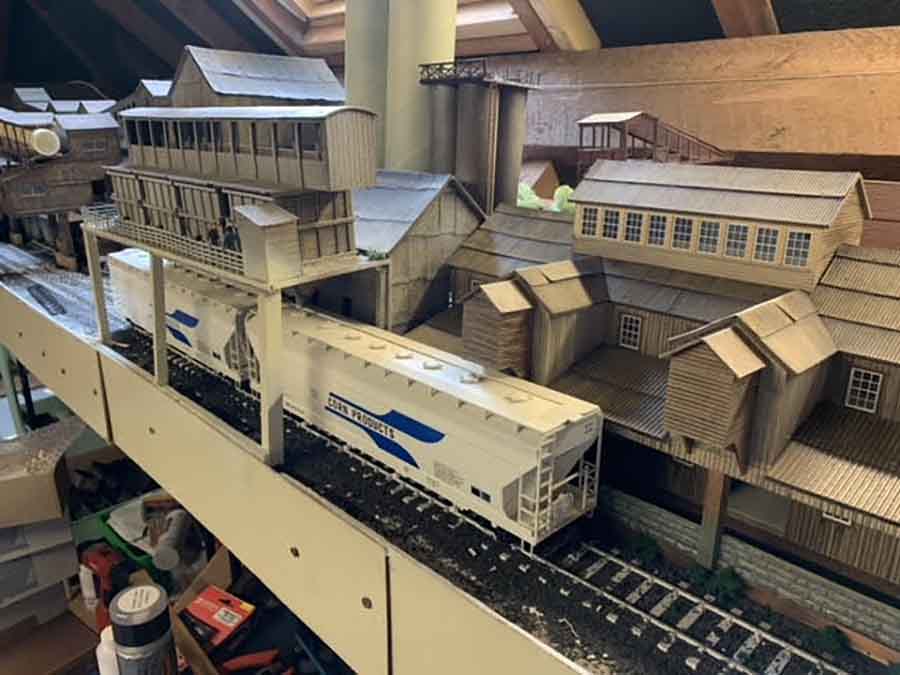

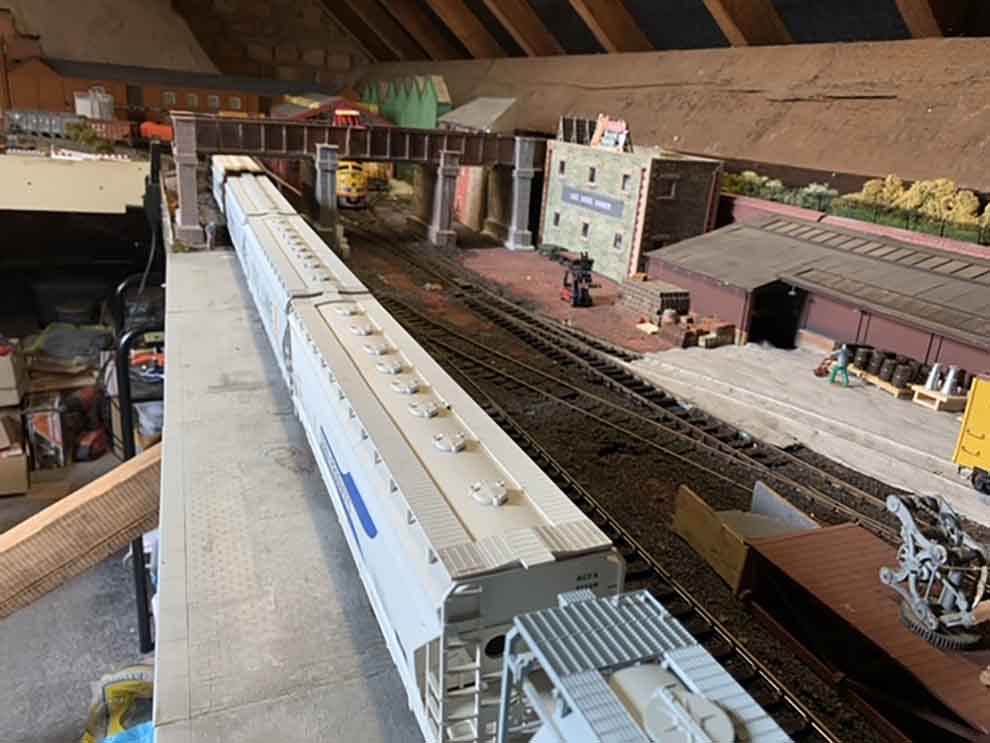
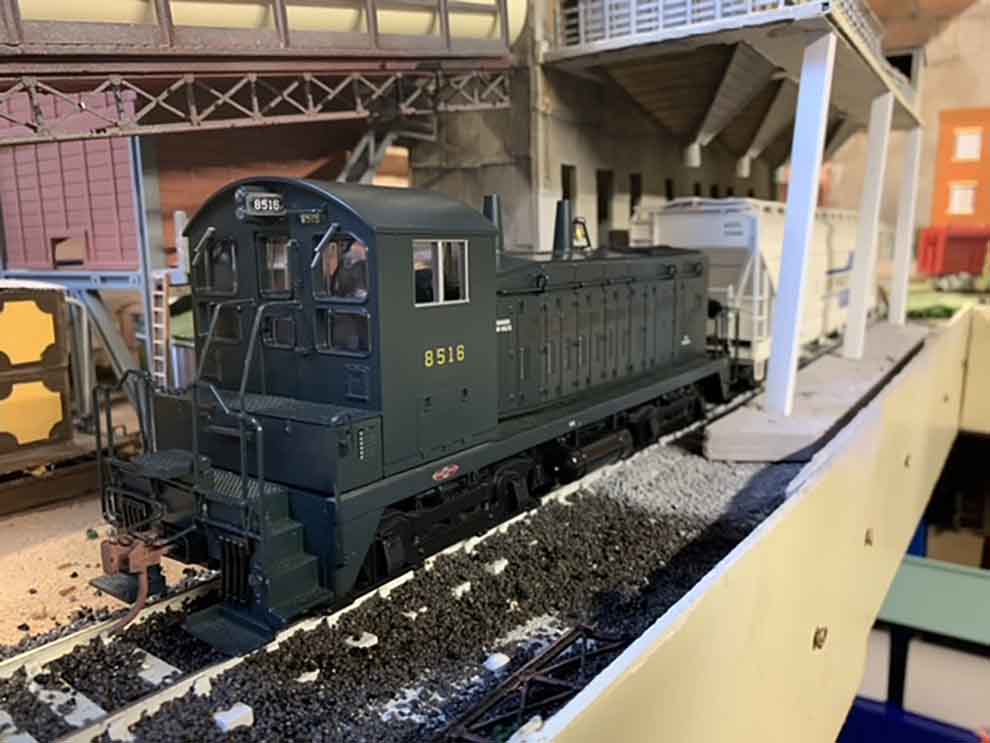
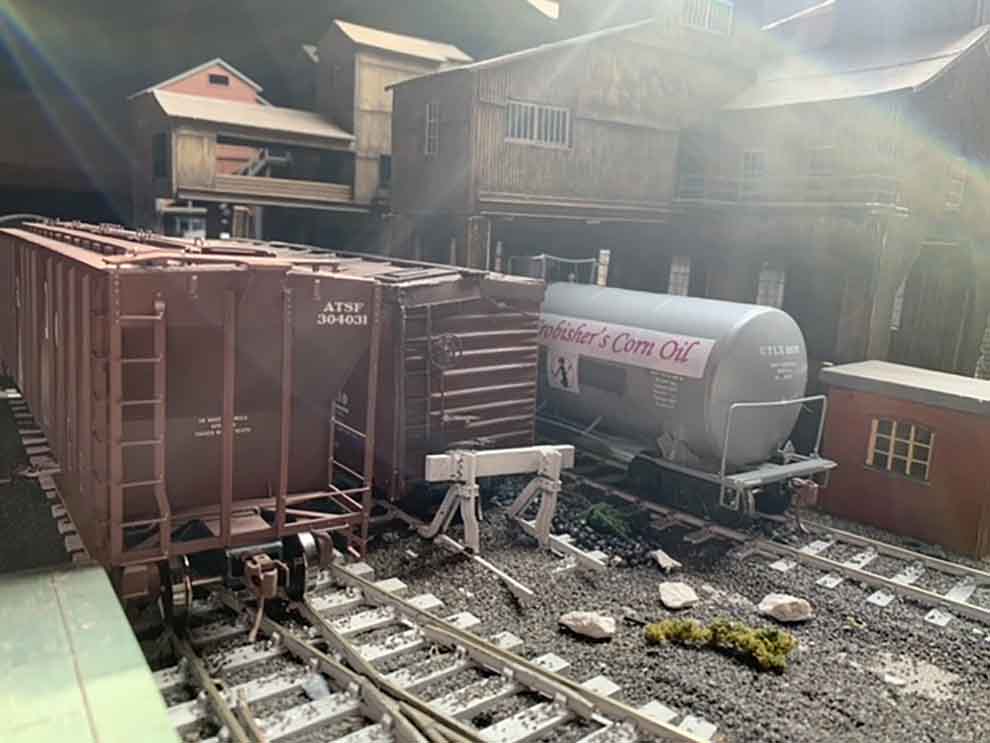
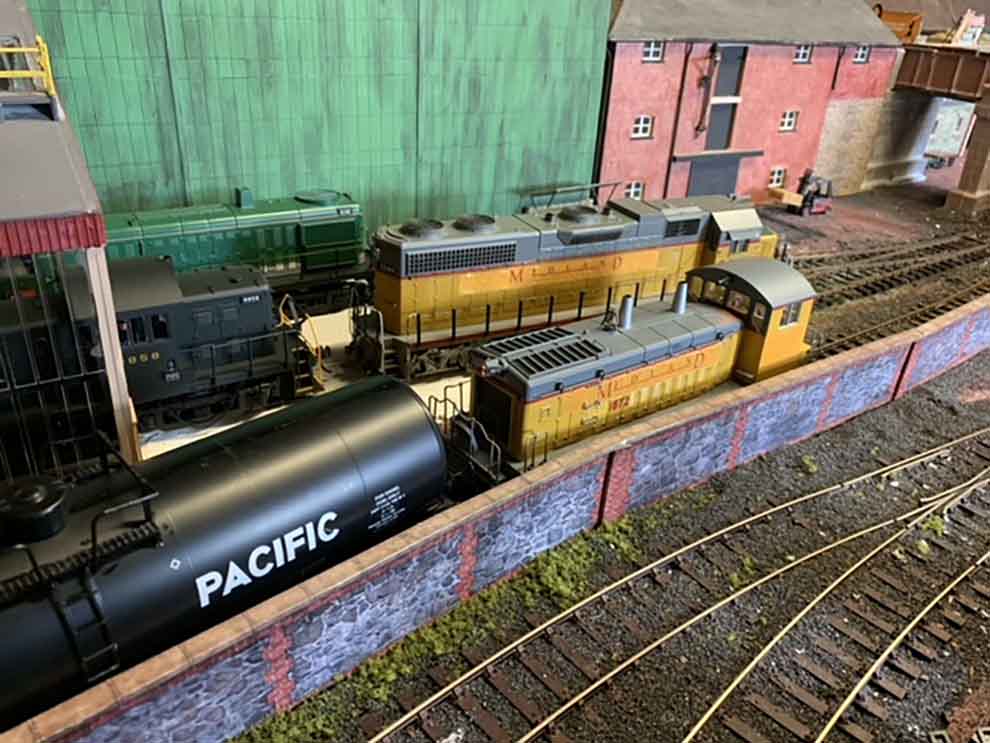
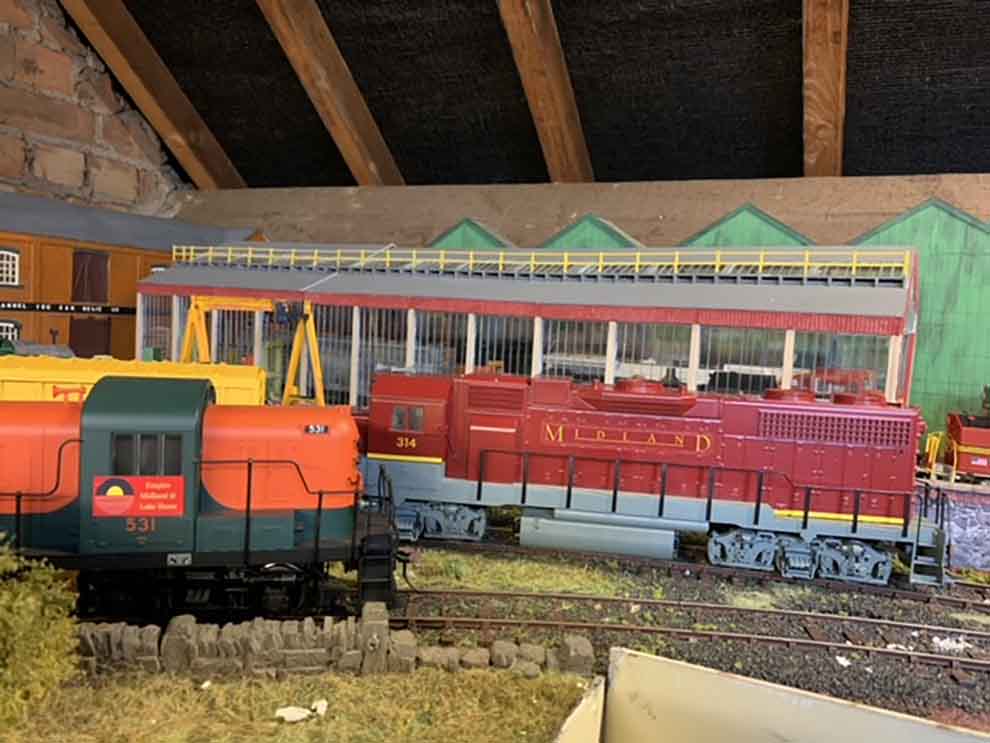
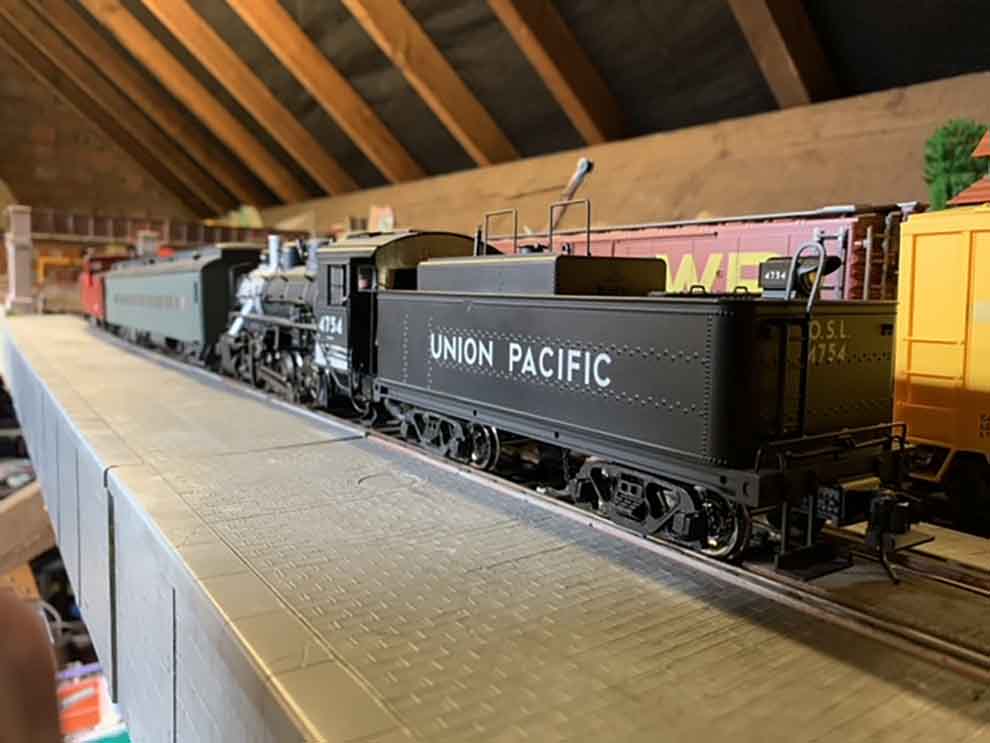
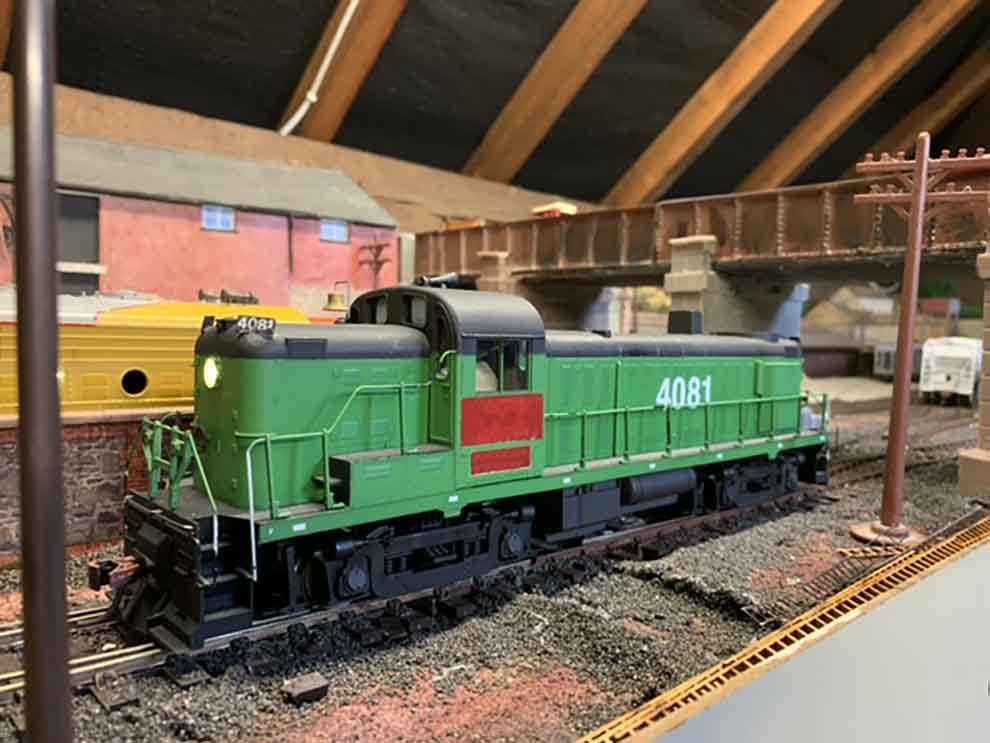
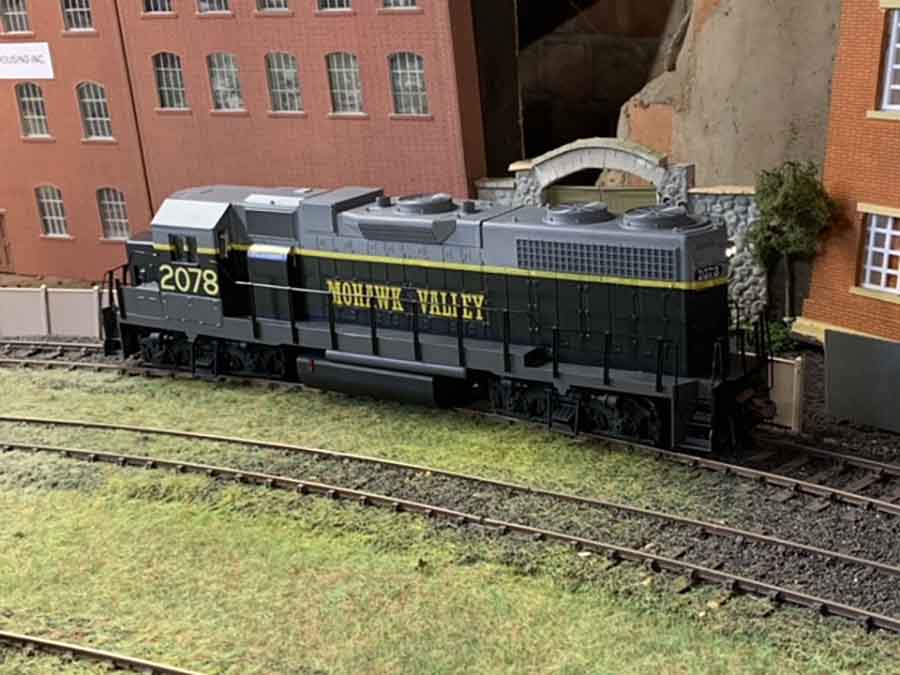
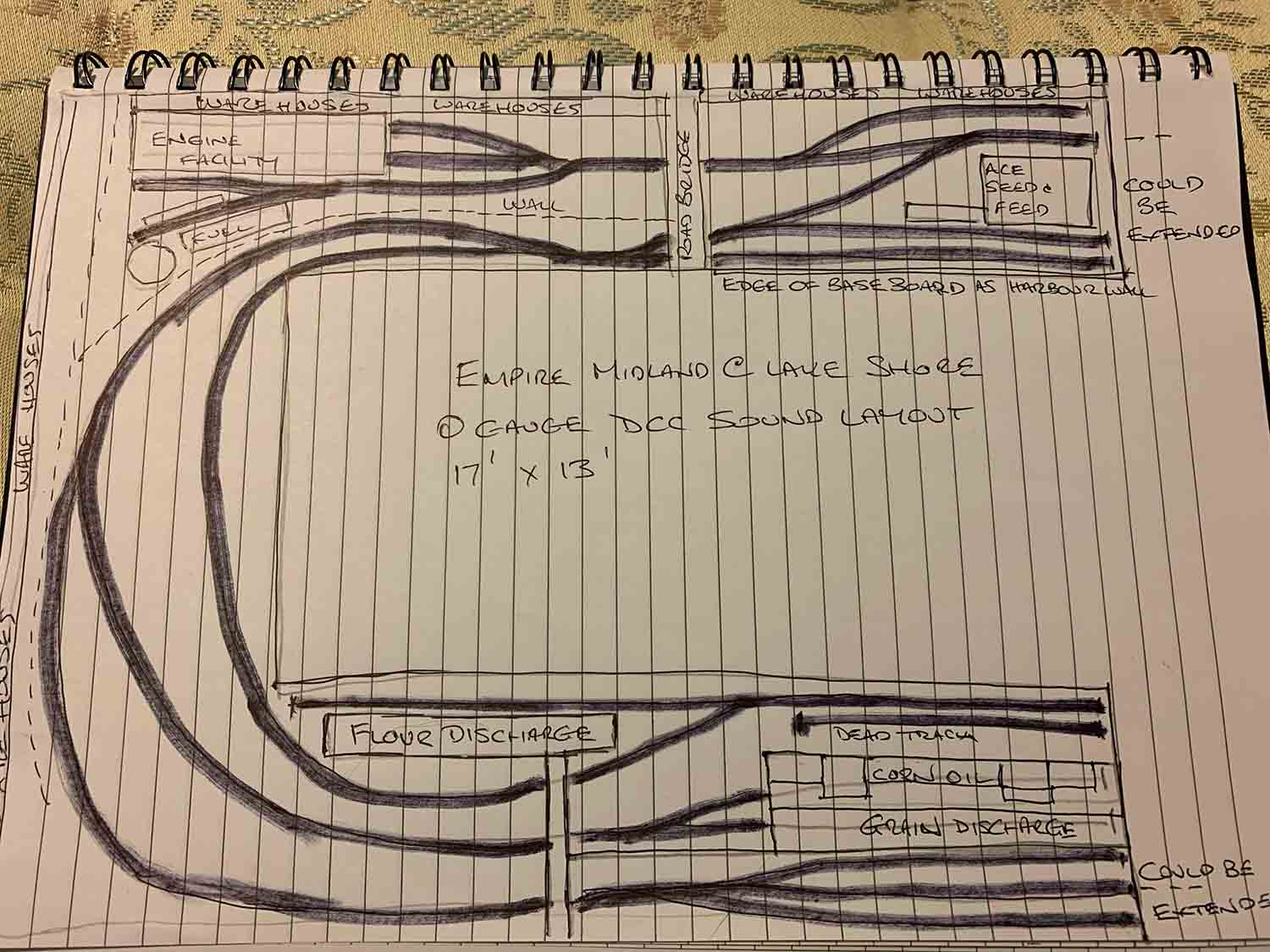

What a great narrative from Martin about his love of North American railroads.
It pretty much sums up why I like them as well, the great variety of operations from the Class 1 lines with hundreds of locos to short lines with two or three patched very tired looking locos. Also the number of businesses that rely on the railroads for moving their freight and receiving new supplies via rail.
Great layout and story.
Mike S
Very cool would like to see more pics and video of the steamer
I love the history lesson, and the O gauge you have done great work, and the Kadee couplers, didn’t know existed for O gauge, I shouldn’t be surprised .As a Canadian our rails also built this country like our American cousins it’s what formed us, we have seen lines come and go and seems so haunting when you look and study up on them, dreams peoples riches won and lost all to connect a vast country. Martin love the work and the history lesson, thank you.
I noticed only two rails on the track,I thought you needed three rails for O gauge,there must be a different power pickup in the locomotive.How is this done?
Your detailed description was extremely interesting. I like your layout and the idea of changing names to something meaningful to yourself. You might want to investigate our Canadian website Kijiji.ca and search out HO trains, where many items can be purchased cheaper than EBay, and in Canadian dollars.
Pretty Kool.!!!!
Love it !!!!!
Shlack in NC
I like the track and roadbed work. . . they look really good.
Re: Steve Alaburda’s comment and question: I’ve also noted that O scale trax are always three-rail, but I’m curious as to why they couldn’t be two-rail ???????
Chuck Wertalik
Roanoke, VA
I grew up near Syracuse and can tell you that a small town with a team track maybe near a livestock feed supply store is totally legit for that area. I know that steam ran on the short lines well into the late 50s because one steam locomotive set fire to my dad’s Hayfield One Summer.
So how do you get the engine to the front of the train and also spot cars? Maybe a video to demonstrate.
Thank you all for the kind and encouraging comments.
Dan Robertson: normally Kadee 805 couplers are used for o gauge, well they are in the UK anyway…
Steve Aluburda: as with z gauge to g gauge, two rail O gauge picks up its current through the wheels from both rails, one negative and the other positive. With O gauge, especially American O gauge, three rail rules. With long standing company’s like Lionel having the lions share of the market. In the UK, 3 rail was always regarded as the “toy” system with manufacturers like Hornby and Basset-Lowke from the 1930’s onwards. Three rail 00 gauge was popular in the 1950’s with Hornby Dublo and Trix Twin, but two rail OO is now the standard as it is in British O gauge. This is were the difficulty in buying US models occurs, as we have to be so careful when choosing our rolling stock. The difference in wheel standards make 3 rail engines seem like they are running on tractor wheels and are certainly not to scale but designed to run on tin plate track with very sharp curves. I’m not being disrespectful, but it really is at the “toy” end of the market although the quality of Lionel models are superb, especially their sound system. I honestly wish they would produce two rail engines, but they have followed the 3 rail path and because of its popularity, other manufactures, even those producing 2 rail outline have followed suit and offer models from both camps. In the UK, 2 rail is the norm.
I will get a YouTube channel sorted and post some videos, I do have quite a few and believe me, the sounds are mind blowing.
With Al’s permission they will be posted.
Daniel Sichel: Thank you for your comment. We holidayed (vacationed) in the New England area a few years ago, and stopped for a visit to the Erie Canal Museum in Syracuse, where I picked up a fold out leaflet, the back of which was a wonderful full colour drawing of the Erie Canal. I’ve still got the leaflet and often thought that it would make a great railway…at that time I wasn’t modelling anything, but when I switched over to US outline I found the leaflet in a cupboard…the seeds were sown!!!
Dan Piccolo: in real life of course there would be a run around loop, so only one engine would suffice for the operations involved. However, I decided from the off that there would be no run around. I know that financially, this would not happen, but with a bit of modellers license and to add real operational interest, it was left out.
Trains are built up in the three hidden sidings to the side of the flour plant. As Lake Shore is a terminus, it’s assumed that cars have been spotted at several industries that the line services which means that trains lengths entering the harbor are limited to 5-6 cars and a single engine. Trains are usually pulled into the Harbour area, engine first, and depending on their length, either onto the line behind the Ace Feed and Seed building, that being the longest siding or the harbor wall siding. The engine is usually uncoupled , but again this is very dependent on the cars that need spotting. A second engine waiting on another siding or on the flour plant line will then draw the cars back along the line, releasing the engine that has brought them in. This engine then usually retires to the loco facility for localised servicing before returning with another train. Now the fun begins. Depending on the cars involved will depend on where the engine is positioned. Usually switching is performed by elderly Alco RS1 or 2 engines, but cars for the flour discharge plant have to be pulled backwards, engine at the left of the train, to the plant area where the can be spotted one at a time to the discharges. The headshunt will only hold a SW9 locomotive, hence the plants resident loco and one covered hoppers at a time. In contrast, corn oil or grain trains have the engine at the right hand end of the train so hoppers can be pushed with Into the respective discharge area and switching commence with the engine at the front of the train. These cars when dealt with are pulled back to the harbor where the flour trains will be pushed back to this area. The engine that brought them to Lake Shore originally will normally pull them back out of the harbour, it having been turned on the Y junction off site so it’s pointing cab first to pull its train. It will have traversed from the loco facility out back to the hidden sidings and manually turned out of sight and brought back to just before to harbor where it will wait for its train. It could be called upon to do some switching if it demands that action to be completed. In reality, this is a lot simpler than it sounds when written down and if you can follow my (very bad) drawing, I’m sure you will be able to follow things. The golden rule is to use two engines. The hard part is mentally deciding how to get the correct engine in the correct position for the correct train. Believe me that an operating session where two trains are brought in, spotted, loaded or unloaded and taken out again, can take a good couple of hours, by which time I usually am in dire need of a large coffee! But it is great fun!
I absolutely love the 2 rail o gauge. To me 3 rails are so unrealistic and ruin the whole preception of realistic railroads. 2 rails for me always.
O scale and Lionel are two different things. Lionel has historically not built to scale, but equipment has always been greatly shortened to operate on extremely sharp curves. ala Christmas gardens. American O scale is 1/4″ equals 1 foot. the proportion 1/48th.
hi al. I’ve been receiving your blogs in my email address for sometime now, and am greatly interested in starting another go scale layout but not sure where to start I have enough space to build a layout about 8×4. I’d like any info or plans or ideas as where to start I’m partly retired and am almost 89yeara old I do have plenty of ho stuff to build another go layout any info or info you can give would be greatly appreciated. !! thanks val in Orem Utah;;
oops. that’s 80 years old not 89 !;
Hello Al,
What an email you sent! Feels like a Christmas gift to get so much information from fellow modelers in one email. Many thanks!
Merry Christmas to all, and to all, a good layout.
DJ
Awesome layout Martin, so realistic. As others have asked about the two rail system instead of the three rail system, I see how it has been done thru the british 0 gauge (or UK ) that is the difference. Thank you for explaining because I run 0 gauge lionel trains and I was wondering also.
very nice
American O Gauge (i.e Three Rail) is never two rail setup and the rails are tubes not the normal rail shape. S Gauge is the closer to a SCALE size at 1/64th scale.
Originally made by A.C Gilbert, American Flyer is was a more true to scale two rail toy train. American Flyer went out of business about 1966 and the remains were bought up by Lionel, but has not been of equal quality in my experience. The electronics is improved but the functionality and quality is lacking.
There is a small but viable amount of S gauge that is more true to scale than even the American Flyer trains for the die hard scale modeler. Look up S-Helper S Scale, and https://americanmodels.com/ for more S gauge content.
Wonderful job Martin. O gauge is so detailed and realistic it’s hard to beat. Also it’s hard to model without a large space. I hope your extensions include a loop so you can complicate your switching with thru trains. I am always wanking about fascia treatments so I’d like to offer a couple of observations. IMHO your edges could be blended better into your layout if they were 1. black or 2. if you made some retaining walls or other treatments to better suit the scenery it leads into. Just my opinion but if you think about it…why have a hard stop when you can blend it in? Great job! Keep up the good work!